Tough as Boots
May 18, 2023
One of the world’s most recognizable/iconic symbols of the American West was born in Texas
BY: LAUREL MILLER
The cowboy boot is a sartorial success story. More than 160 years after its invention, the iconic leather footwear adorns the feet of everyone from cattle ranchers and CEO’s to runway models. While its evolution from cowboys to couture is evidence of its success, the role cowboy boots have played in Texas can’t be understated.
An amalgamation of European and Mexican culture, craftsmanship and heritage, the cowboy boot was created in tandem with the establishment of cattle ranching in Texas in the mid-19th century. During the Civil War, both sides of the cavalry wore riding boots of classic European design- round-toed, low-heeled, with unembellished leather upper that covered the lower leg. To withstand the rigors of the frontier, however, there arose a need for a modified boot that protected the wearer from the elements and provided greater stability in the saddle.
The initial design was inspired by the vaqueros, late 18th century Spanish and Mexican colonists and former soldiers-turned cowboys who established towns and ranchos in what would become Texas. “I can’t stress enough how much the culture of Mexico influenced and refined the cowboy boot,” says Lee Miller, owner of Austin’s Texas Traditions and one of the nation’s top bootmakers. “Their craft collided with European tradition; in Mexican bootmaking, you find elaborate design and a level of perfection when it comes to construction, shape and assembly.”
The city of León, in Guanajuato, Mexico, has been producing some of the world’s finest footwear since the 17th century. It became an epicenter for cowboy boot production because of the quality of the leather and the craftsmanship, which was passed down over generations, eventually making its way across the border.
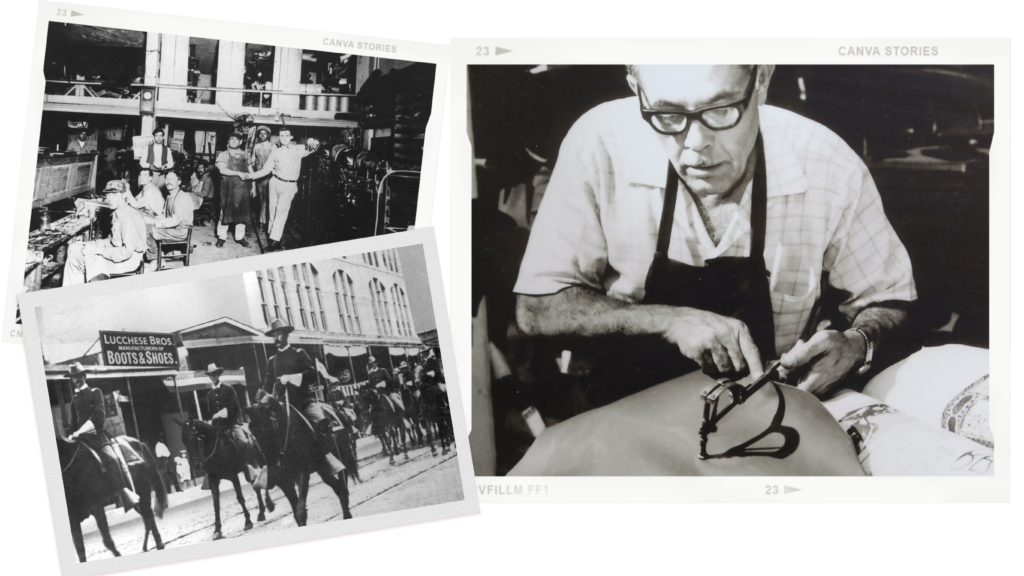
European immigrants like Salvatore “Sam” Lucchese Sr., an aspiring Italian bootmaker, also brought centuries of craftsmanship to Texas. Lucchese founded his eponymous company in San Antonio in 1883 (it’s now based in El Paso) and established himself as one of Texas’s finest bootmakers. “The company has steadfastly maintained a classical Western design aesthetic with generational craftsmanship and quality…our bootmaking process has remained virtually unchanged for several generations,” says Lucchese CEO Doug Kindy. “The boots are made one at a time and not in large batches, which allows us to continue a custom boot business [for the company’s size].”
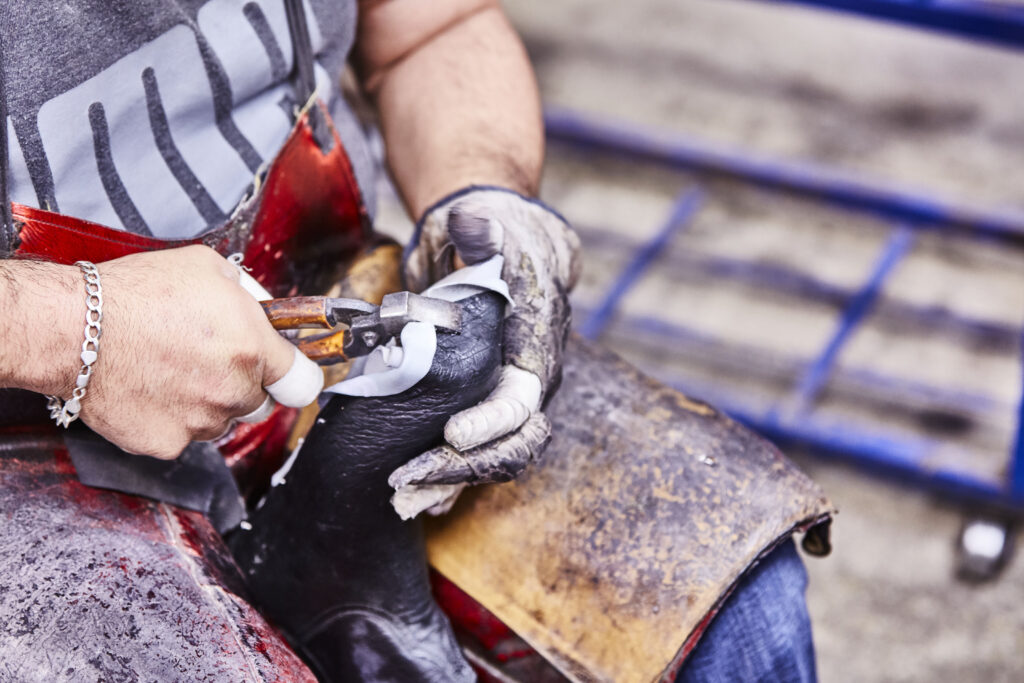
These early bootmakers created the prototype for the modern cowboy boot by elongating the vaquero boot’s toe so the foot could slip in and out of the stirrup with ease, while a higher, underslung heel better anchored the foot in the stirrup. Tall, stiff uppers reinforced with side-welts (piping) and stitching protected the lower legs from brush and snakebite. Side-welts and stitching reinforced the uppers to prevent sagging, and steel or stiff leather shanks in the insoles reinforced the arches. Hardwood pegs were used in place of nails to secure the insole to the shank.
This singular boot style prevailed until the mid-20th century, when improvements in technology and changes in horsemanship led to more automated, mass production and greater diversity in materials and styles, including upper height and heel and toe shape.
Things like digitized scanners for measuring feet and computerized sewing machines have made the bootmaking process faster and easier for industrial manufacturers, but even small companies like Texas Traditions use non-computerized sewing and sanding machines.
Still, when it comes to automated production, “It will never replace the quality and precision of handmade,” says Miller. “Bootmaking is complex, because you’re dealing with human anatomy, and the knowledge and skill of the bootmaker takes it to the next level. Today, it’s important for bootmakers to know how to do both (traditional and modern) practices.” With that in mind, Miller trains all of his apprentices to make boots the way he himself was taught.
Mike Vaughn of Bowie’s Mike Vaughn Handmade Boots agrees. He uses a vintage, foot pedal-operated Singer sewing machine for his exquisitely topstitched boots. At 15, he participated in a high school work program that placed him in the workshop of Joe and Clyde Vasquez, skilled veteran bootmakers for world renown M.L. Leddy Boots. “I didn’t even know there was such a thing as handmade boots,” says Vaughn, who says he’s still passionate about bootmaking after 42 years.
“Bootmaking is complex, because you’re dealing with human anatomy, and the knowledge and skill of the bootmaker takes it to the next level. Today, it’s important for bootmakers to know how to do both (traditional and modern) practices.”
Lee Miller, Texas Traditions
Vaughn crafts boots with an exacting fit from a last of his own design. As a horseman, he also understands firsthand the importance of a well-designed upper to prevent leg chafing. Even with a two-to-three-year wait list and base price of $2,500, Vaughn says he has customers from as far away as Australia. “The highest compliment you can have is someone flying across the world to get a pair of boots made.”
These boots were made for walking
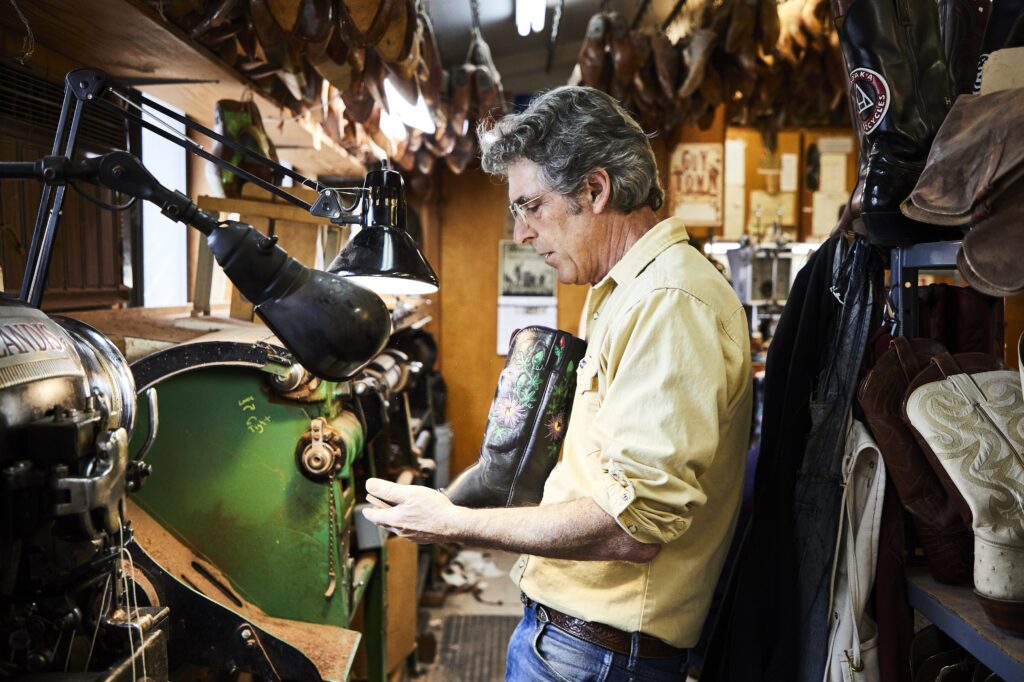
As bootmaking evolved in the United States during the latter part of the 20th century, companies of all sizes began employing multigenerational makers from León. Unfortunately, this heritage has largely vanished, because younger generations have abandoned bootmaking for higher paying jobs, and many industrial manufacturers have moved their factories overseas. “The only way to find a bootmaker these days is to train them yourself,” says Miller, who employs two apprentices at his small shop, which produces on average 100 pairs of boots a year and has a five-year backlog.
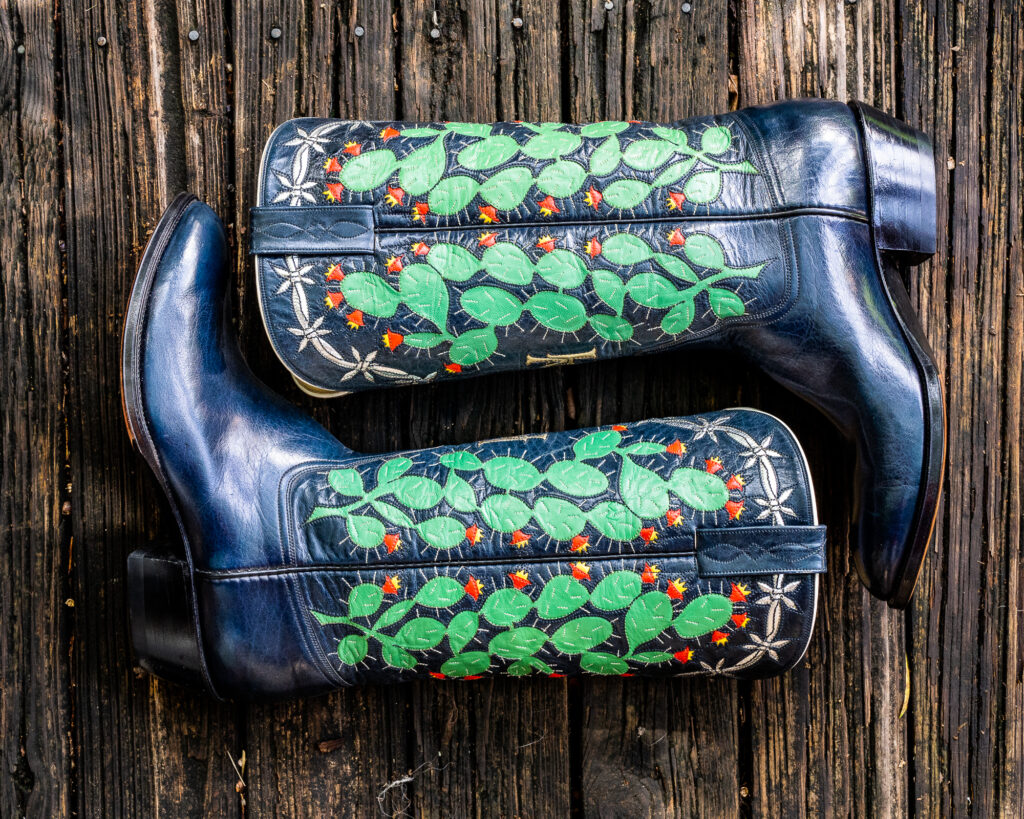
Miller also started out as an apprentice, following his graduation from Oklahoma State Tech’s (now Oklahoma State University Institute of Technology) bootmaking course in 1976. It was his desire to become an artist that led him to make custom boots, because he viewed the footwear as means of merging his love of art with a functional medium. It was this pursuit of craftsmanship and precision that led Miller to apprentice with renown- if notoriously mercurial- Austin bootmaker Charlie Dunn, then 79. “He was an artist. I felt like I was in the presence of Picasso,” he says.
Dunn, who passed away at age 95 and was buried in a pair of boots made by Miller, was known for making footwear with an incomparable fit. He famously took six different measurements of the foot, a practice Miller increased to nine after he and his wife, Carrlyn, purchased the shop in 1986. He still does all his fitting by hand, and from these measurements, he creates the single most important part of bootmaking: The last.
A last is a wooden, plastic or fiberglass model of a foot. Historically, bootmakers made a custom last for every customer, a practice that has been abandoned. Today, factory boots are made with generic lasts, but some small, custom bootmakers like Texas Traditions still make personal lasts or use their own design that is then modified for each customer. “A last is a treasured thing; it has all of the bootmaker’s knowledge distilled into it,” says Miller.
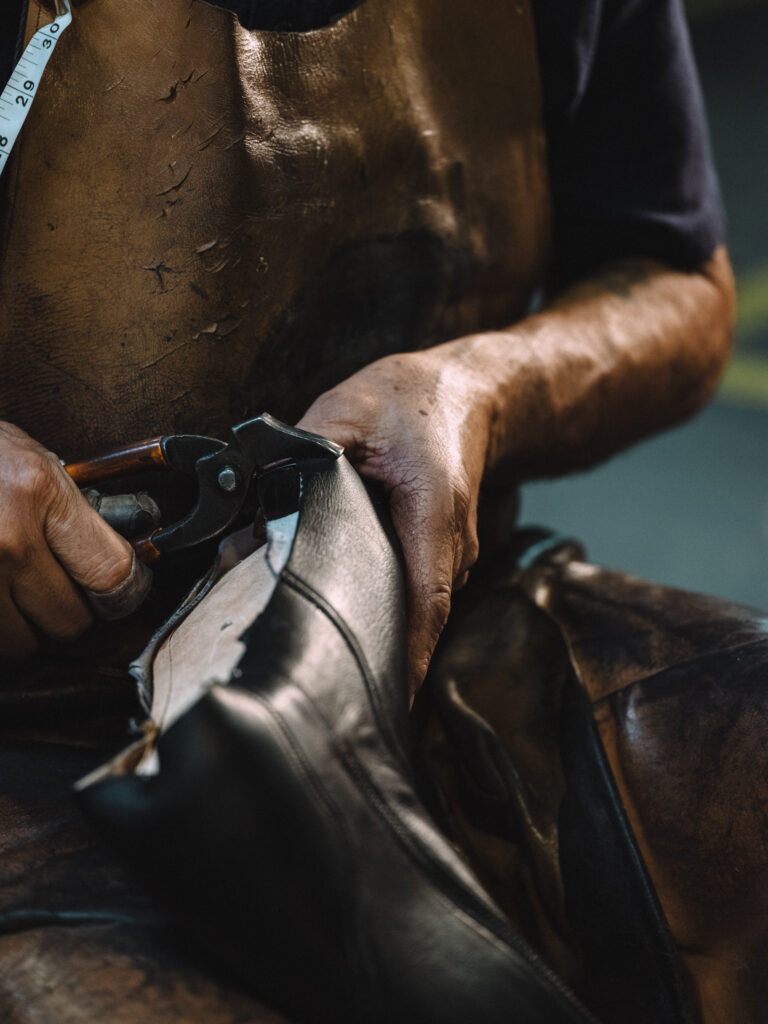
Lucchese was the first boot company to integrate the concept of custom lasts into factory production. After Sam Lucchese Jr., grandson of Salvatore, took over the business in 1961, he created a “twisted cone” hardwood last, which better represented foot anatomy, including the arch.
“Our last mimics the natural curves of the foot, the only change being that it’s now made of resin,” says Kindy. “While we do everything possible to keep up with consumer demand, we won’t compromise on quality for mass production. A single boot takes anywhere between 150 to 200 individual steps to complete by hand, utilizing the best raw materials. We’re limited in the number of boots we can produce because of the detail that goes into every pair.”
For any boot, leather quality is also critical to fit, as well as durability and aesthetics. “Most factory boots are called ‘throwaway boots’ because of the way they’re made, with threaded nails instead of hand-stitching, and the materials,” says Vaughn, noting that an accessible price point necessitates low-quality leather.
Leather cost can be an issue for small bootmakers committed to creating a quality, heirloom product, as vendors require them to purchase whole skins, which may not be used for years. To accommodate customer preference and demand, bootmakers must mix and match all leather sourcing from across the globe.
Despite the obstacles and labor involved, bootmakers like Texas Traditions, Mike Vaughn Handmade Boots and Lucchese Boot Co. uphold Texas’s heritage of traditional cowboy boot production. Their integrity and commitment to craft is also giving rise to a new era of bootmakers, artisans who will hopefully do their part to ensure this multicultural legacy will continue for generations to come.
“If you’re doing something you love, you want it to continue after you’re gone,” says Miller. “It shouldn’t die with you.”
Texas Traditions: Small showroom and work shop, fittings by appointment only. 2222 College Ave., Austin, TX 78704, 512-443-4447, @texas_traditions_boots.
Mike Vaughn Handmade Boots: Call 940-872-6935 or visit mikevaughnhandmadeboots.com.
Lucchese Boot Co.: While widely available at retailers nationwide, Lucchese now has 19 retail stores across the Western U.S. Custom fittings offered by appointment. lucchese.com.
Salsa Verde & Wild Game from the kitchen of Chef Austin Simmons of Tris
February 11, 2025
Texas’ White Bass Run
February 11, 2025
From the Spring to Spirit: Goodnight Loving Vodka
February 11, 2025